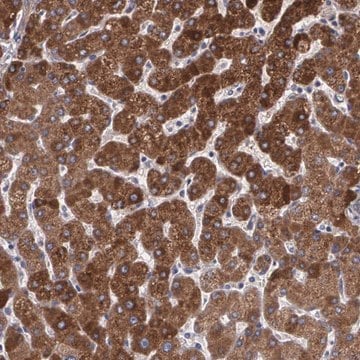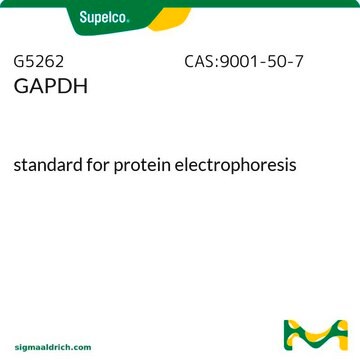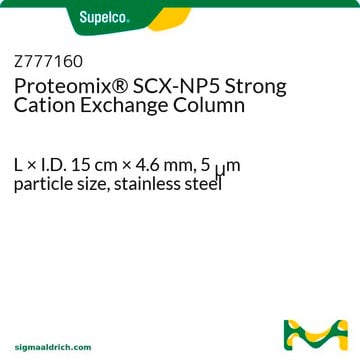P0123
Anti-Paraoxonase 1 (PON1) in Kaninchen hergestellte Antikörper
~1 mg/mL, affinity isolated antibody, buffered aqueous solution
Synonym(e):
Anti-Arylesterase, Anti-Coronary Artey Disease, Susceptibility to, Anti-Coronary Spasms, Susceptibility to, Anti-Esterase A (ESA), Anti-Organophosphate Poisoning, Sensitivity to, Anti-PON1, Anti-Parathion Poisoning, Sensitivity to
About This Item
Empfohlene Produkte
Biologische Quelle
rabbit
Qualitätsniveau
Konjugat
unconjugated
Antikörperform
affinity isolated antibody
Antikörper-Produkttyp
primary antibodies
Klon
polyclonal
Form
buffered aqueous solution
Mol-Gew.
antigen ~40 kDa
Speziesreaktivität
mouse (predicted), rat (predicted), human
Konzentration
~1 mg/mL
Methode(n)
indirect immunofluorescence: 5-10 μg/mL using human HT-29 cells
western blot: 0.5-1 μg/mL using whole extract of human colorectal adenocarcinoma HT-29 cells
UniProt-Hinterlegungsnummer
Versandbedingung
dry ice
Lagertemp.
−20°C
Posttranslationale Modifikation Target
unmodified
Angaben zum Gen
human ... PON1(5444)
mouse ... Pon1(18979)
rat ... Pon1(84024)
Allgemeine Beschreibung
Immunogen
Anwendung
Biochem./physiol. Wirkung
Physikalische Form
Haftungsausschluss
Not finding the right product?
Try our Produkt-Auswahlhilfe.
Lagerklassenschlüssel
10 - Combustible liquids
WGK
WGK 3
Flammpunkt (°F)
Not applicable
Flammpunkt (°C)
Not applicable
Persönliche Schutzausrüstung
Eyeshields, Gloves, multi-purpose combination respirator cartridge (US)
Analysenzertifikate (COA)
Suchen Sie nach Analysenzertifikate (COA), indem Sie die Lot-/Chargennummer des Produkts eingeben. Lot- und Chargennummern sind auf dem Produktetikett hinter den Wörtern ‘Lot’ oder ‘Batch’ (Lot oder Charge) zu finden.
Besitzen Sie dieses Produkt bereits?
In der Dokumentenbibliothek finden Sie die Dokumentation zu den Produkten, die Sie kürzlich erworben haben.
Unser Team von Wissenschaftlern verfügt über Erfahrung in allen Forschungsbereichen einschließlich Life Science, Materialwissenschaften, chemischer Synthese, Chromatographie, Analytik und vielen mehr..
Setzen Sie sich mit dem technischen Dienst in Verbindung.








